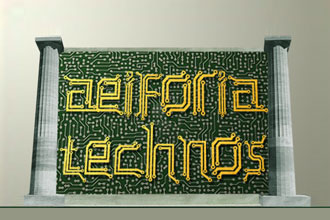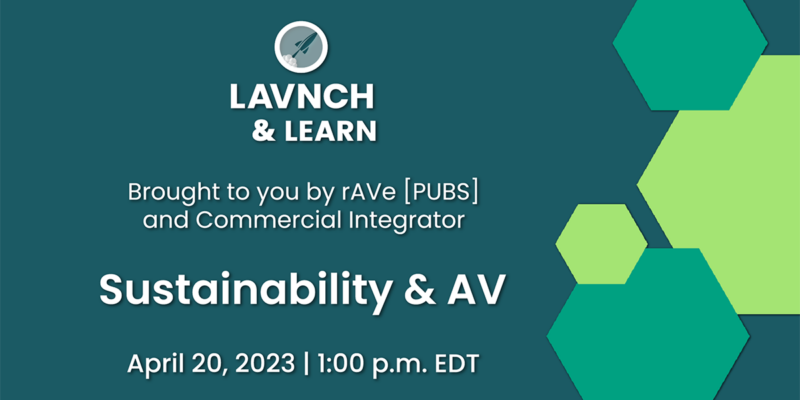STEP-ing Out
 Well, we have officially finished our first one. Complete. Done. It’s outta’ here! After many years of involvement we got through a STEP pilot project. For those of you who don’t know, have short term memory, or just plain haven’t been paying attention, STEP stands for the Sustainable Technology Environments Program. If you are familiar with Leadership in Energy and Environmental Design (LEED), Green Globes, CalGreen or many other green building rating systems, this is similar but specifically for the Information Communications Technologies (ICT) industries. It is overseen and administered by the STEP Foundation which is comprised of technology trade associations such as InfoComm, TIA, CompTIA, and others.
Well, we have officially finished our first one. Complete. Done. It’s outta’ here! After many years of involvement we got through a STEP pilot project. For those of you who don’t know, have short term memory, or just plain haven’t been paying attention, STEP stands for the Sustainable Technology Environments Program. If you are familiar with Leadership in Energy and Environmental Design (LEED), Green Globes, CalGreen or many other green building rating systems, this is similar but specifically for the Information Communications Technologies (ICT) industries. It is overseen and administered by the STEP Foundation which is comprised of technology trade associations such as InfoComm, TIA, CompTIA, and others.
In providing full disclosure here, I was part of the team of great folks under Scott Walker’s (Waveguide Consulting) leadership who through InfoComm International’s wing wrote this crazy thing called STEP. The group consisted of a variety of consultants, end users, manufacturers, and integrators and was based out of the desire to have a seat at the table and make a meaningful contribution to reducing the carbon footprint. I continue to serve as the co-chair of the Technical Advisory Committee for the STEP Foundation and have worked with the allied ICT groups in the creation of their industry specific credits and moderated their input over the general credits to continually improve the system. As part of the process it was decided to move forward with pilot projects of which my company gladly accepted the challenge and have now worked through the design phase of two projects and one of those is the one that just completed. We were up to a challenge so we decided to select a building type that we know to be a heavy user of power and were complex in nature — performing arts venues. The second of the two pilot projects is for a major university and is a mix of new construction and renovation of an existing performing arts center that houses a school of theater, dance, and film and media. It is due to start construction soon and is significantly larger than the one we just finished. More on his project at a later time…
The project we just finished is a multi-purpose black box theater that is contained in a new library for the Cuyahoga County Public Library system located adjacent to their main administrative branch. The key to the success of the project was providing a flexible space for the end user. Quite often in performing arts lingo that means more gear to accommodate anything they can throw at it. Designed by Holzheimer Bolek Meehan Architects of Cleveland, Ohio our task was to provide the engineering, theater technology, IT, audiovisual and acoustics that could accommodate a variety of experiences within the black box — art shows, banquets, dance, live theater, guest lectures, and such — as well as the rest of the actual library including meeting spaces, gaming areas, classrooms, and other public areas.
Sustainability was definitely a priority for the client and they were eager to include the technology as part of it so STEP was a perfect fit. The first challenge was to get everyone involved to understand the system and its similarities and differences to the LEED process. Having a great partner in HBM Architects who made sure our input was incorporated early in the design process I strongly feel help to make this a success in the design phase. I would highly encourage anyone undertaking this or any other green building project to push hard to have a seat at the table and as early in the process as possible. The earlier you are involved, the easier it is to design great solutions and save the project money down the road.
After understanding the basic parameters of the project and the intended use, the checklist (like LEED) was able to be reviewed and potential credits identified. It was critical to have the engineers, architects, and owner involved with the process so there were no surprises later. Having the General Contractor or a professional estimator involved also proves useful in evaluating the potential costs of solutions. The design reference guide really worked well as a companion document to be able to explain the process, the expectations, and the deliverables for each credit we were seeking to achieve to the other team members.
This project was all new construction so certain credits, such as the reuse or recycling of existing equipment, didn’t apply and fortunately there is a mechanism in the score sheet that allows you to turn off not applicable credits. The majority of the design team had worked on LEED projects before so we started off with a good foundation in which to start. Working with our engineers, we were able to identify the opportunities for interfacing with the building systems early on so they could plan appropriately. The key to the success was in making sure we documented everything we could. I have heard concerns in my many conversation with interested parties outside of these project that pursuing STEP could add significant amounts of time to the project and reduce profitability as a result of lower fees. What I discovered instead was that it actually saved us time in the long run because we had this information to reference back to in an orderly manner later in the process when questions or concerns did arise.
At the time of the design of this project we did run into one small snag with interfacing with the Building Automation System that would be designed as part of the HVAC, lighting, power, and other building systems which was a lack of a truly plug and play translator and graphical user interface. We found one manufacturer that had a great translator but was lacking on the GUI and another that did neither very well, and a third that did not even have a translator but had a great dashboard. That said, it was still early in the game for the development of these systems and the industry has really stepped up since and now provides solid solutions. In our case we had to cobble together several manufacturers and rely on savvy programming skills from the integrator for the GUI.
Like LEED and other rating systems there is a heavy reliance on other standards either from ASHRE, InfoComm, or others that took some time to make sure we were inclusive and not exclusive of relevant ones. That said, it proved to be of significant value as these standards are well known outside of the ICT industry by the general trades so the learning curve was more on our part than theirs.
Once we proceeded through the first three phases (programming, architectural and infrastructure, and system design) we moved the project out to bid. We took advantage of this to hold an educational session at the pre-bid meeting about STEP and what it would mean for contractors bidding on the project also that their bids reflected what they perceived to be any additional costs related to complying with the system integration phase. One a successful bidder was identified we were able to drill down deeper with them at their office using it as another opportunity to educate their staff about the STEP system. We did find some challenges with the contractor not fully understanding the required deliverables such as how to document the recycling of materials from construction waste and often were left with information that had to be recreated. I certainly will give some credence to the fact that I personally have been steeped in the STEP rating since its inception and that what may be clear to me was not to them. At the end however the credits were achieved and they would hopefully be prepared for the next STEP project that may cross their doors.
Overall I felt the process went well for something new to the game. Like when design and construction teams first heard of LEED and there was a scramble to understand, I expect this to play out as well until it becomes second nature. Being the smaller of the two projects we did I was glad it came first so when the large one goes into construction I will feel more prepared to navigate the contractors through the process for another successful run.
I would be interested in hearing from other people involved with pilot projects and their take on how it went. We certainly plan on doing as many as we can as a way to help our clients achieve their goals while reducing energy and materials. We definitely see it as a win-win for all involved and worth pursuing if you haven’t. Most importantly I found it gave us language and a roadmap when we had that seat at the table to make a meaningful contribution to the quality of the project.





